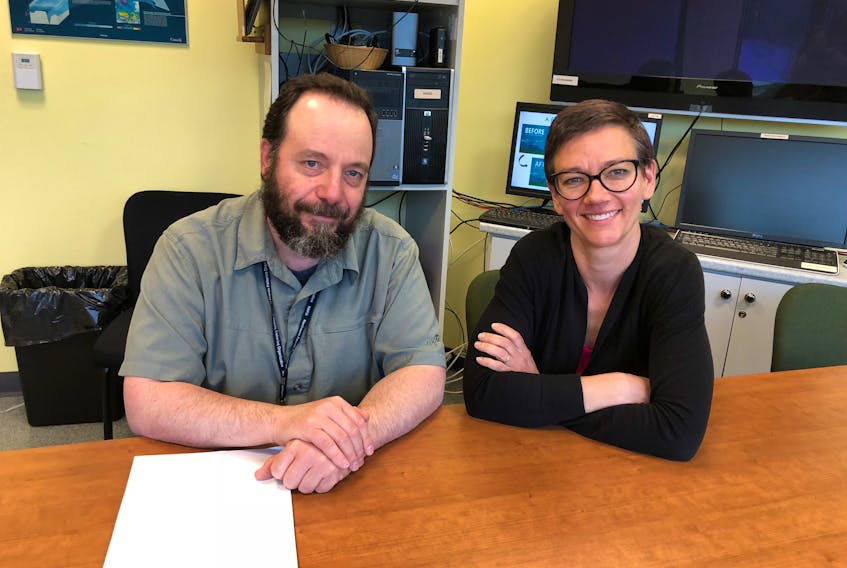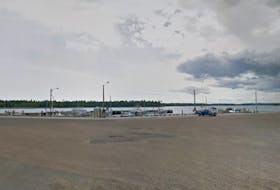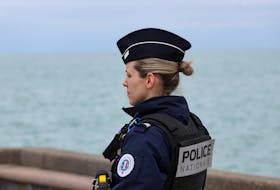NORTHERN PENINSULA, N.L. – In a province where the fishery is foundational to its survival, the decline in cod stocks has many worried and searching for clear answers.
At a technical briefing in St. John's Friday, March 23rd, stock assessment biologist Karen Dwyer of the department of Fisheries and Oceans noted a 30 per cent decline in northern cod stock with the probability of a continued decline in 2019.
This announcement was a particular shock as the same assessment in 2016 predicted a considerable increase in cod numbers for this year. But scientists and harvesters who had noted the declines in the cod’s food source, and the many starving fish of last year’s cod fishery, were not as surprised.
Research scientist with the DFO Dr. Mariano Koen-Alonso says the sudden and sharp decline in cod stock is something being seen across the ecosystem.
“We’ve seen very important reductions in biomass of many species across the board,” said Koen-Alonso. “We have to look at the big picture here, there are several factors and species involved.”
With reductions in the biomass of the cod’s food sources such as shrimp and capelin, Koen-Alonso says the cause of the cod’s decline appears to be more bottom-up than top-down. Bottom-up meaning that a lack of food and poor conditions are the driving force in the shrinking biomass, rather than predators or overfishing which are chief factors in a top-down cause of depletion.
Koen-Alonso says the signs show the capelin’s declining numbers can also be traced to the food chain.
“In the case of the pre-spawning feeding conditions for capelin, the number of zooplankton and the particular species the capelin feeds on have been coming down over the past few years,” he said. “Looking back through these chains since 2014 we’re seeing lower levels of primary production. The plants in the oceans are not producing as much and from there you have this domino effect.”
Koen-Alonso also noted the rise in cod stocks from 2010-2016 had also coincided with an improvement in capelin stocks.
Starvation, predation and by-catch
A higher probability for starvation, Koen-Alonso says, often increases the number of fish lost to predators as well.
“Because the cod are in need of food and it is scarce they spend more time in exposed areas where it is easier for predators to find them,” he said. “Not only that, but if the fish are poorly fed they are weaker and easier to catch.”
This ties into the theory of many involved in the fishery that the abundance of seals is playing a strong role as one of the cod’s main predators.
While he feels this is a plausible factor, Koen-Alonso pointed to the 2014 study on the dynamics and factors of North Atlantic cod called "The role of harp seals, fisheries and food availability in driving the dynamics of northern cod," published in the Marine Ecology Progress series. The study took a close look at the role seals play in the cod population.
“From calculating the consumption and estimating the fraction of cod in the seal’s diet, out of all of this analysis the common theme was that seals did not come up as a significant driver of cod stock,” said Koen-Alonso.
While many young cod are also caught in offshore shrimp trawlers, Koen-Alonso says that their data also suggests this is not a major factor in the decline of cod stocks, and that factors of natural mortality appear to be playing the leading role.
He suspects these factors will be studied more closely in upcoming analysis and projections.
Looking forward
Stock assessment biologist Karen Dwyer says there are many different things the DFO are looking toward in future cod assessments. One is an upcoming telemetry project, that uses GPS satellite technology to track the movement and migration of cod along the inshore and offshore waters of Newfoundland and Labrador.
They plan to take the information gathered from this project into next year’s assessment and model of cod mortality rates.
“That information would be extremely useful,” said Dwyer. “We are still deep in the critical zone with cod, and it’s something we should always keep in mind.”
Koen-Alonso says there is also greater emphasis to study the conditions of the fish themselves, in the hope that any future predictions and projections are as accurate as possible.
But with the declines being noted across the entire ecosystem, this total picture perspective is key to any future studies and analysis around cod population.
“We’re monitoring closely the overall activity of the system, and what we are seeing is an ecosystem that is in low productivity,” Koen-Alonso said. “We need to be particularly cautious in times like this where you have a lot of species not doing well.”
[email protected]
Additional links
Northern cod stock declined over last year; scientists urge minimum fishing effort
DFO scientists clarify the decline of cod
In perspective

STORY CONTINUES BELOW THESE SALTWIRE VIDEOS
Sustainable Wines for Earth Day | SaltWire #reels #EarthDay #shorts








